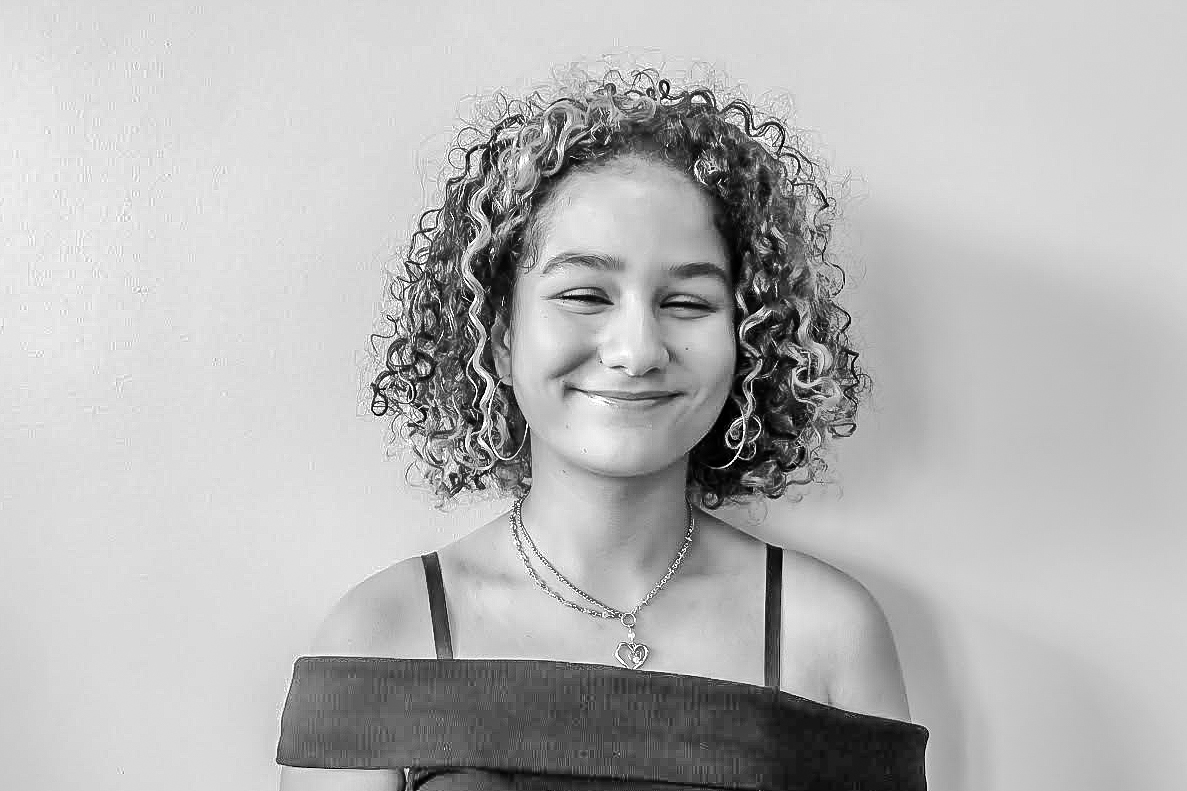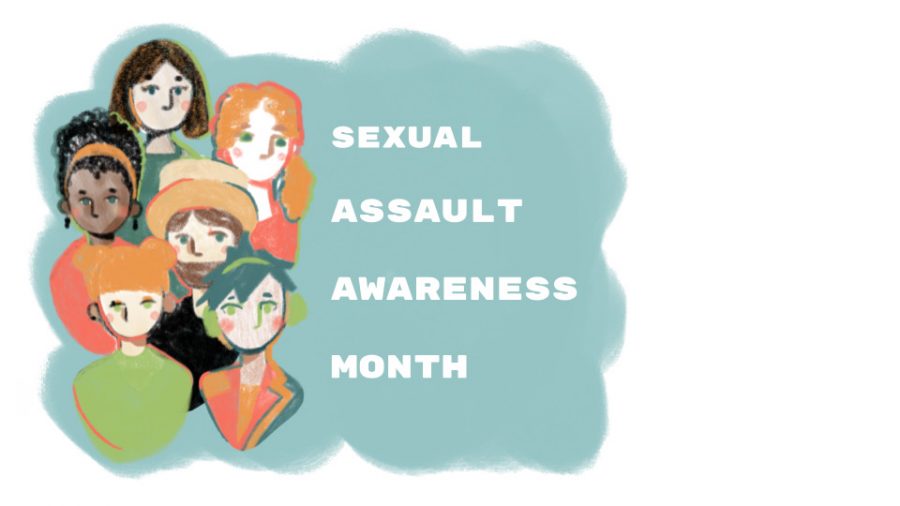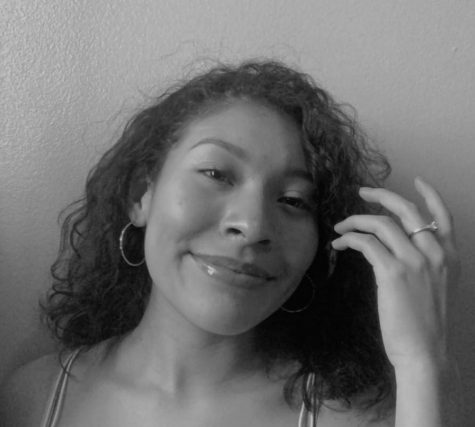Sexual Assault Awareness Month
Sexual Assault Awareness Month raises awareness towards the issue of sexual assault and harassment while advocating for educating the youth on prevention and safety.
Art of group of individuals representing the diverse effect of sexual assault
May 11, 2021
April 2021 marks the 21st anniversary of Sexual Assault Awareness Month (SAAM): a month dedicated to raising awareness for victims of sexual assault, harassment, and abuse, while also educating communities about the issue of sexual assault (SA) and how to prevent sexual violence from happening.
“Raising awareness is important because sexual assault happens a lot more than some might think. Some don’t recognize their own traumas of sexual assault until they learn about it, and some may even be assaulting someone by doing something they think is harmless,” Nadia Castañeda ‘23 said.
According to a nationwide survey by Stop Street Harassment over sexual harassment and assault, they found that 81% of women and 43% of men have experienced some form of sexual harassment and assault in their lifetime with verbal sexual harassment being the most common (77% of women and 34% of men).
“It doesn’t matter what gender you identify as, after hearing a statistic like that it should be clear why sexual assault is an issue that deserves attention. It has been so normalized in our society that little girls don’t think twice if they are catcalled and women don’t feel safe to report sexual violence against them. If we can begin to root out these dangerous behaviors through education, it could save millions and billions of women and men from dangerous, scary, and sometimes fatal experiences,” Victoria Weckmann ‘21 said.
According to a report by Maryland Coalition Against Sexual Assault, only 15.8% to 35% of all sexual assaults are reported to the police. As a result of low reporting rates, only 9% of all rapists get prosecuted, with only 5% of all cases receiving a felony conviction, and only 3% of such rapists receiving a day in prison. The remaining 97% walk free.
“I did not truly understand what sexual harassment was until high school, and by that point, I had already experienced it,” Weckmann said. “The little discussion I heard surrounding sexual assault before high school, was not nearly enough to truly prepare me for what to expect or how to deal with those dangerous situations.
Reports of sexual violence in elementary and high schools increased up to 50% from 9,600 in 2015-2016 to 15,000 during the 2017-2018 school year according to recent data from the Education Department. With this data, the Education Department has emphasized the issue of schools needing to be prepared to handle reports of SA and how to properly handle them.
“I believe the most important thing for City High to do is to establish an environment in which students and faculty feel safe to report cases of sexual harassment. Victims should be able to speak anonymously or not, as well as receive easy access to legal, therapeutic, and administrative resources,” Weckmann said. “People need to know that they are doing the right thing by reporting an incident and that they have nothing to fear in terms of lack of support or backlash from others.”
The City High NESST room is an area in the building which provides students with access to mental health/social-emotional support services and be able to work with staff to build skills and strategies.
“We want all students to feel safe at City High. If you need support and don’t know who to turn to, find a trusted adult in the building and talk to them,” Amy Collen, City High NESST room advisor/teacher said. “I think it is important for students to know where to go when they need support. Education on sexual assault is so important to support victims, but just as important to prevent sexual assault from happening in the first place.”
According to RAINN, the National Sexual Assault Hotline, people between the ages of 12-34 are at the most risk of being raped or sexually assaulted.
“There definitely needs to be a better amount of education, specifically curriculums aimed at young students. If not only techniques on how to handle being sexually harassed were taught, but also the unacceptability toward harassment,” Weckmann said. “It would go a huge way in stopping kids from getting on the wrong path while they are young. Not only that, but survivor stories need to be told. Not only does it allow people to humanize the issue of sexual assault, but survivor stories make assault itself much more taboo.”
Addressing the issue of sexual assault and harassment through education can be essential to students in being able to recognize the contributing factors of sexual assault and harassment early on and how to potentially prevent it.
“Many can easily feed into the normalization of sexual assault if their peers are doing so too. Sadly I’ve seen this happen a lot. Teenagers influence each other, [so being able to] differentiate between what’s okay and what’s not can make a huge difference. I think it should be talked about more often, and taken a lot more seriously. We need to feel we have a safe space to open up about these things, and I think every one of each grade level should be well educated on what sexual assault looks like [in terms of what’s okay and what’s not],” Castañeda said.
Teaching students the importance of consent, boundaries and promoting positive relationships in sex education classes can also begin to create a safer culture of preventing sexual assault and harassment among teens as well according to RAINN.
“These issues are addressed, but not very often, and not in much depth. Every student should be able to feel they can talk about their experiences without a huge fear of disbelief and invalidation,” Castañeda said. “Every student should be taught more of the idea of consent and sexual assault prevention, as not everyone fully understands that what they do and see as normal or harmless might not be okay.”
SAAM works with victims of assault who do not receive support and helps in situations where incidents go unreported.
“It is so important to support and believe anyone that opens up about sexual assault. Disbelief and invalidation scare so many victims into not opening up. More often than not the victim’s story is true, and disregarding someone’s traumatic experiences can be very hard on them. They may feel invalidated like they were overthinking, or like what happened to them was okay if they are silenced by disbelievers. It is important for them to know that what happened to them was not okay, and not normal,” Castañeda said. “Support plays a big factor in helping them realize this and feel safer in talking about their experience. It takes so much and can be very hard to open up about sexual assault, these victims need all the safety and support they can get.”
Social and cultural norms have also been contributing factors to encouraging violence with attitudes, beliefs, and behavior being associated with gender(s) according to a SA report by the World Health Organization. This includes norms surrounding sexism with things such as dress code and slut-shaming- both of which devalue women for the purpose and favor of men and ultimately pushing the narrative that women are deserving of SA because of the way they dress and/or act.
“I have been mooned by boys trying to get my attention. I have been forced to change seats in class because of continuing and unwanted comments from male peers. And I have had people emotionally manipulate and repeatedly coerce me into sending nude photos. It took me a very long time to realize that the way people treat me has nothing to do with me, and everything to do with them,” Weckmann said.
SAAM can begin to create more discussion over the effects, contributing factors, and social and cultural issues within society while giving survivors a chance for more visibility and transparency from their experiences.
“Sexual Assault Awareness Month is definitely a safe space for many. As more people [begin to] open up, others are less afraid to do the same. It’s important for them to be able to validate their experiences if they think otherwise, and people sharing their own stories can help victims feel like they are not alone and can connect to people’s experiences,” Castañeda said.
With events like SAAM, many students and others alike hope to create a more open and safe environment for survivors of SA while continuing to push for change in education surrounding sexual assault and harassment.
“The biggest thing I hope to see come out of Sexual Assault Awareness Month is awareness plain and simple. I think that sexual assault and harassment is a topic commonly avoided by society because it brings illumination to some of the biggest and ugliest problems we have. It is not pretty or fun to talk about, but it is necessary to talk about if we ever want to see change,” Weckmann said.
Sexual Assault Help and Support Resources:































